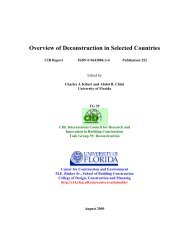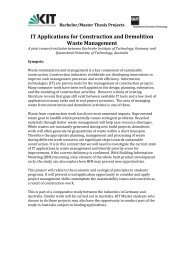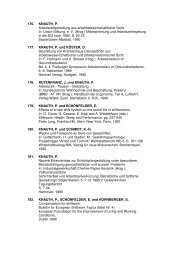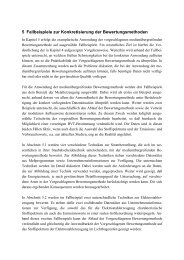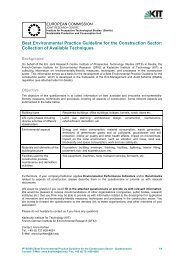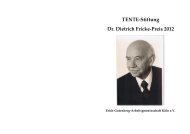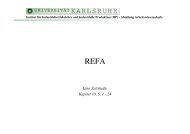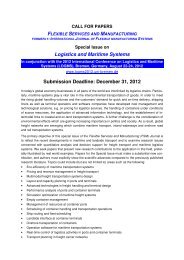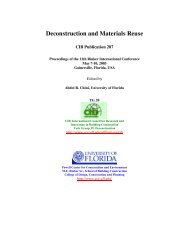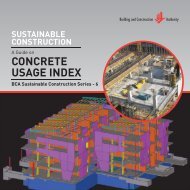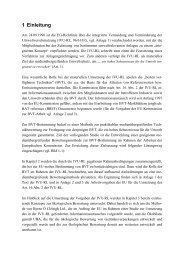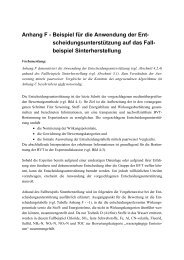Waste reduction final report -4 - Test Input
Waste reduction final report -4 - Test Input
Waste reduction final report -4 - Test Input
You also want an ePaper? Increase the reach of your titles
YUMPU automatically turns print PDFs into web optimized ePapers that Google loves.
est outcome. This includes applying life cycle assessment across each stage of the<br />
dismantling and recycling (or disposal) process).<br />
Promotion of dismantlement of specific building materials and recycling<br />
A greater understanding of the costs and benefits relating to the dismantlement and recycling<br />
of specific building material wastes should be developed. Everyone in the supply chain<br />
should co-operate to achieve the best outcome. The Government should provide web-based<br />
resources relating to guidance and location of suitable recycling facilities.<br />
Hazardous materials<br />
Hazardous wastes must be dealt with correctly, in line with existing legislation such as <strong>Waste</strong><br />
Disposal Act, Clean Air Act, Act on Special Measures against Dioxins, Occupational Safety<br />
and Hygiene Act. In particular, measures to prevent CFCs or asbestos from escaping into the<br />
environment need to be implemented. Guideline includes specific guidance on the incidence<br />
and control of CFCs in refrigeration applications (considered too difficult to retrieve from<br />
insulation), asbestos, and wood treated with CCA.<br />
3. Guidance documents and tools<br />
CASBEE<br />
CASBEE (Comprehensive Assessment System for Building Environment Efficiency) is an<br />
environmental labelling method for buildings. BEE (Building Environmental Efficiency) was<br />
developed as a new indicator. The environmental performance of the building is labelled as<br />
B-, B+, A and S. The assessment categories of CASBEE are “Quality of Building” and<br />
“Environmental Load”. “Quality of Building” includes “Indoor Environment”, “Quality of<br />
Service” and “Outdoor Environment on Site”. “Environmental Load” includes “Energy”,<br />
“Resources and Materials” and “Off-site Environment”. BEE is calculated by dividing<br />
“Quality of Building” with Environmental Load”.<br />
The sub categories relating to “Resources and Materials” in CASBEE are “Water Resource”<br />
and “Material of Low Environmental Load”. “Material of Low Environmental Load” has sub<br />
categories of “Recycled Materials”, “Timber from Sustainable Forestry”, “Materials with<br />
Low Health Risks”, “Reuse of Existing Building”, “Reusability of Components & Materials”<br />
and “Use of CFCs & Halons”. See Figure 8 for indicative results.<br />
BEAT<br />
BEAT (Building Environment Assessment Tool) is a life cycle assessment system that<br />
calculates environmental impacts related with homes and offices. BEAT is a tool to help<br />
designers of buildings to decrease environmental impacts, to be used by ordinary building<br />
designers who are not familiar with life cycle assessment and environmental effects of<br />
buildings.<br />
BEAT considers the entire life cycle of houses and office buildings. The life cycle of building<br />
is divided into five stages, production and transport of building materials and components,<br />
assembling on construction site, using or living in the building, renewal and renovation, and<br />
demolition. The results displaying window of BEAT-HOUSE is shown in figure 7. BEAT<br />
was developed by the Building Research Institute and the National Institute for Land<br />
Infrastructure Management.<br />
43



